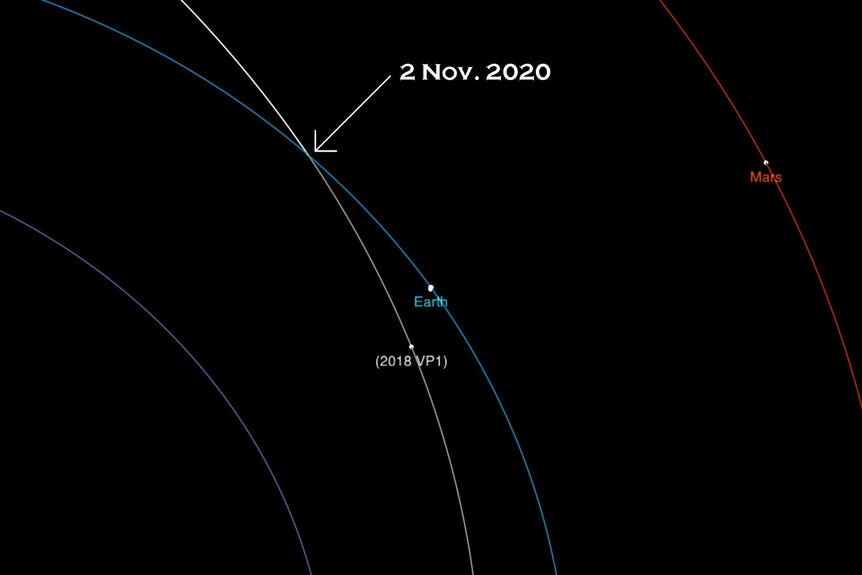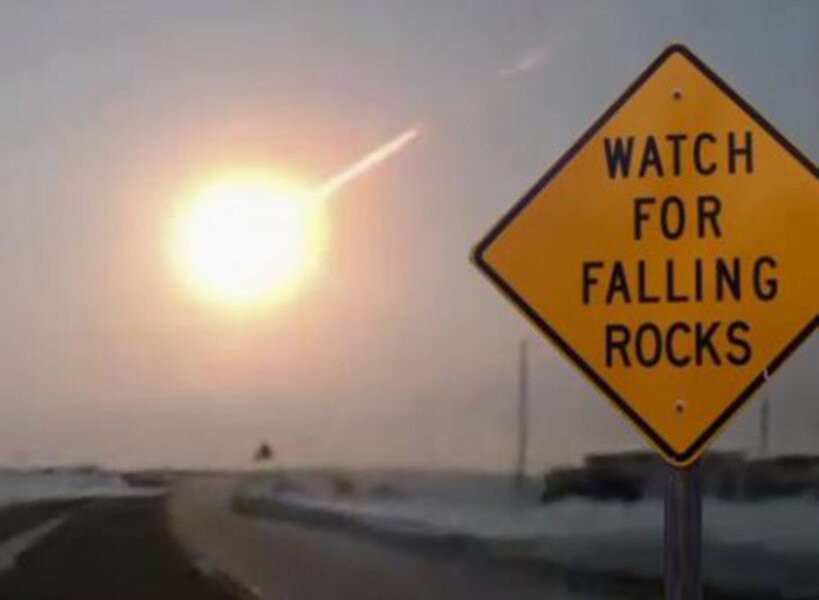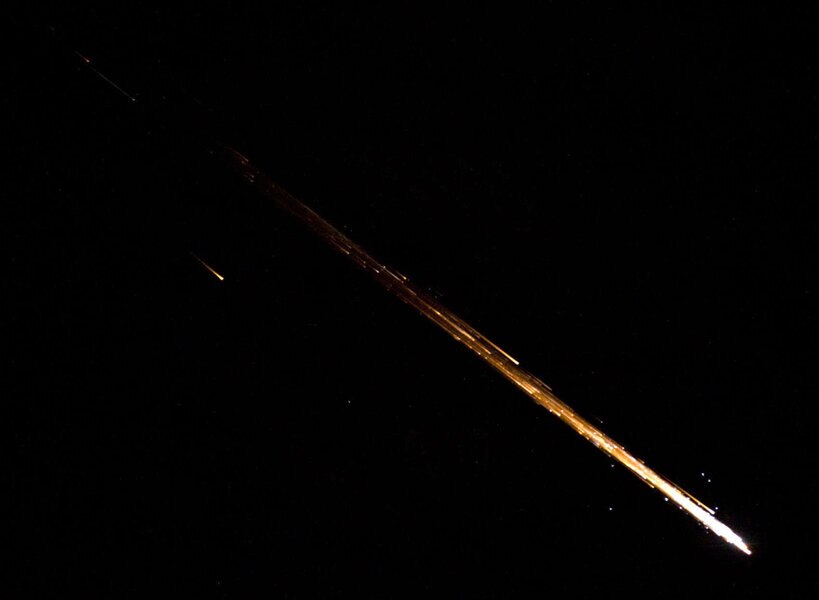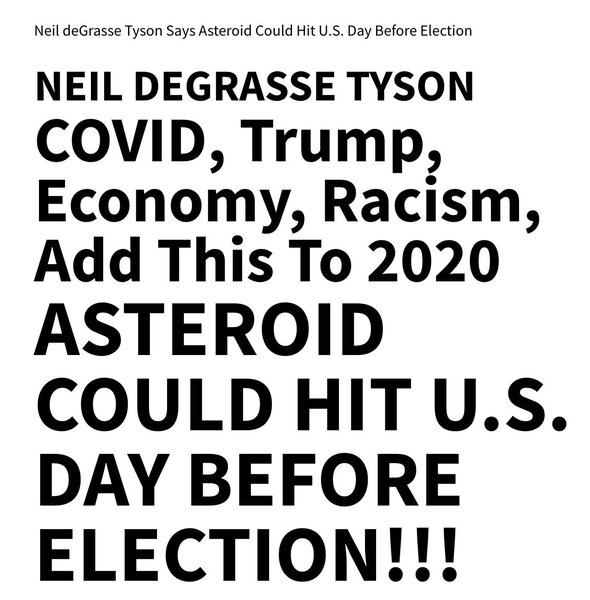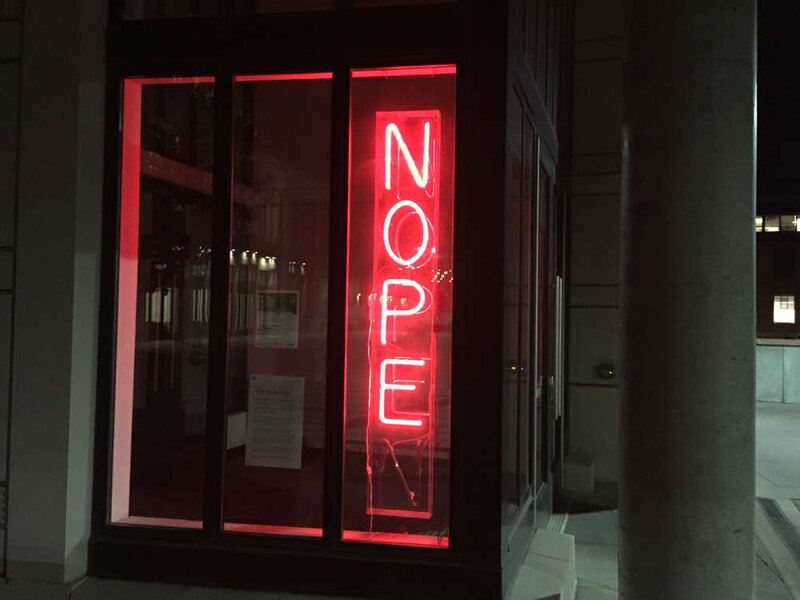Create a free profile to get unlimited access to exclusive videos, sweepstakes, and more!
No, an asteroid is not likely to hit Earth the day before the election
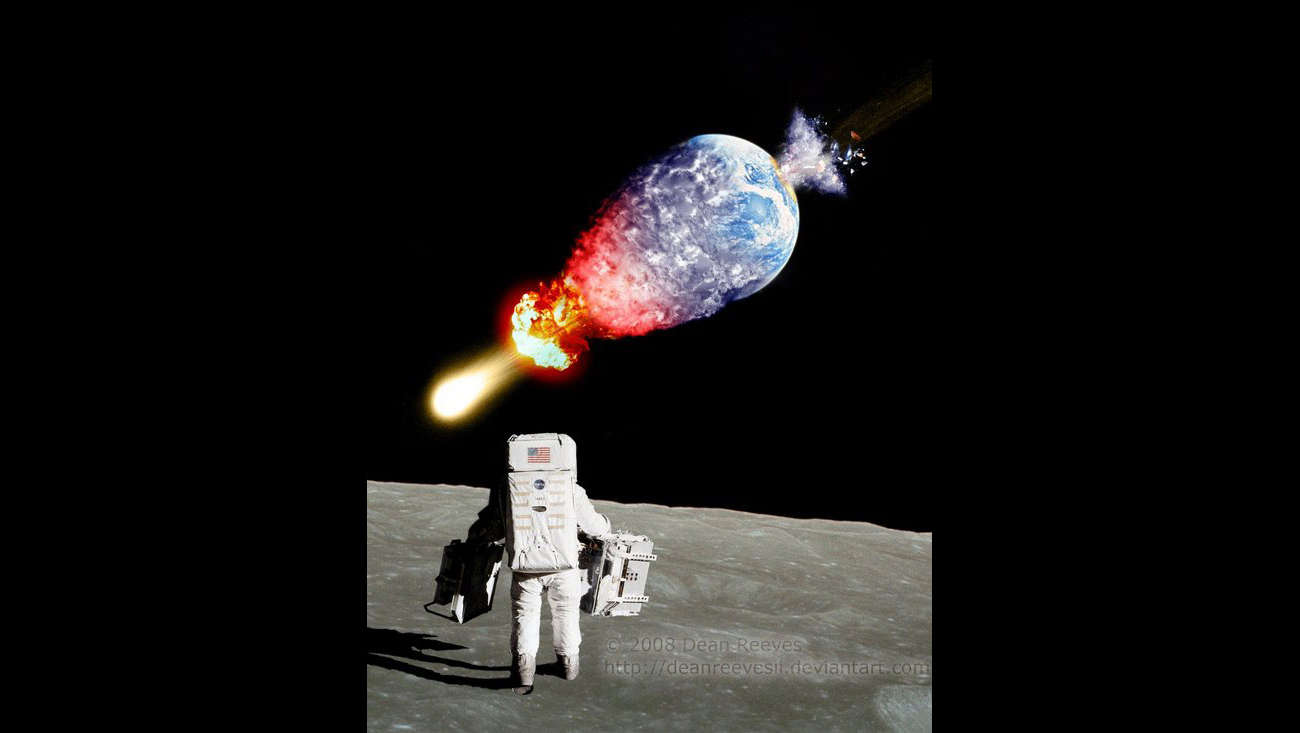
UPDATE (2 November at 22:00 UTC):
Told ya so.
You're welcome.
I can always tell when astronomer Neil Tyson tweets something about the sky. Within minutes, the emails and tweets to me start pouring in.
In this case, a few days ago, seemingly out of the blue people were asking me if it's true that an asteroid might hit Earth the day before the elections, on 2 November, 2020.
And, sure enough:
Now, right away I should note that Neil mentions the name of the asteroid — 2018 VP1 — so simply typing that bit of alphanumeric salad into a search engine will yield lots of info.
But I'll note that while Neil's phrasing is that the asteroid "may buzz-cut the Earth" reads pretty clearly to me, I can see where others might not see it the same way.
So, to be clear, I'll refer you to the headline of the article you're currently reading (i.e. scroll up; I'll wait).
I can also refer you to an article I wrote about this rock (and another, called 2011 ES4) back in August. But since it's come up again, and the election is in just a couple of weeks, let's give this one another go.
2018 VP1 is an asteroid that orbits the Sun, probably a chunk of rock (or, less likely, metal; those kinds of asteroids are much more rare). Its orbit is elliptical, and stretches from between the orbits of Venus and Earth to out past Mars. It crosses Earth's orbit, and can get close enough to qualify being called a Near-Earth Asteroid, or NEO.
In fact, there's one point in its orbit that intersects Earth's, meaning it can potentially hit us. It reaches that point on or about 2 November, 2020, at the same time Earth is nearby in its own orbit.
Yikes! Are we doomed?
Don't panic! The answer is no, for two reasons.
One is that we can calculate the chance of it hitting. The orbit of an asteroid can be calculated mathematically by measuring its position in the sky over many days or even years. The more observations we make, the better we can calculate the orbit. But, we can't measure the position perfectly accurately, so there's some fuzziness to the predicted orbit. The farther in the future we try to make that prediction, the less certain we can be of its exact position.
Here's an analogy:
As I've written before, when an asteroid is first discovered, the orbit calculated for it is pretty fuzzy, because we don't have a long enough arc to really be able to predict where it will be in the future. Small uncertainties in the position early on add up to big ones later. The analogy I like is if you're an outfielder in a baseball game, and as soon as the batter hits the ball you close your eyes. Now, predict where the ball will be when it lands. Yeah, nope. But if you keep watching it you'll be able to see its trajectory much better.
So we can know it'll be near the Earth on 2 November. But will it hit? We can only make statistical predictions. But when we do, we find that the chance of an impact is only 0.41%.
That's small. Put it this way: There's a 99.59% chance it'll miss! The best guess is that it will miss us by 420,000 km, farther away than the Moon.
Now, this is based on observations made shortly after it was discovered in 2018. It hasn't been observed since, so it's hard to say exactly what the odds are of a miss. Generally speaking, Earth is a small target and space is big — I mean, why else call it space? — so after more observations are made the chance of an impact will probably go down.
But why haven't more observations been made since 2018? Ah, that brings us to the second reason not to panic: 2018 VP1 is tiny.
Like, really tiny: Probably about 2–4 meters across. That's very roughly the size of a small car (up to about the size of a somewhat less small car). When you look at the asteroid's orbit, it spends most of its time pretty dang far from Earth, hundreds of millions of kilometers. Its small stature makes it far too faint to spot.
This is kinda crappy news for astronomers who might want to study it, but good news for people worried about an apocalyptic impact. It can't make one.
And that's because even if it does hit it's way too small to make it down Earth's surface. Instead, it'll disintegrate high up in the atmosphere, probably 70–90 kilometers up. It's just too dinky to survive the immense pressure and heat of ramming our air.
It'll make a spectacular fireball — bright enough to read by — but only for a few seconds as the air above us slows its descent violently. After it breaks up it might drop some small meteorites that fall much more slowly to the ground, which would be nifty. That's happened with minor impacts like this before.
So, to reiterate: 1) It almost certainly won't hit, and 2) even if it does it can't hurt us, and might actually be cool.
This hasn't stopped tabloids and other related sites from playing this up like it's potentially doomsday. TMZ, for example, has the headline "NEIL DEGRASSE TYSON [,] COVID, Trump, Economy, Racism, Add This To 2020 ASTEROID COULD HIT U.S. DAY BEFORE ELECTION!!!" in font that increased in size with each line until it got so big I literally had to scroll down to read it all.
And check this one out for those of you who prefer their tweets to be entirely fact-free:
[Cue me screaming into my meteorite collection.]
Yegads. That's the opposite of what he said. Finding more goofiness like this isn't hard, either.
Look, big impacts are something to be concerned about — you could ask a dinosaur if any were still around* — but small ones like this happen all the time, and seriously aren't a big deal. Still, they're interesting, and may even be of scientific value.
... though I wonder if their greatest value is to media who produce clickbait. After seeing enough of those, I sometimes pray for a good impact.
*Yes, I know, non-avian dinosaurs, I know, but that messes up the joke.
